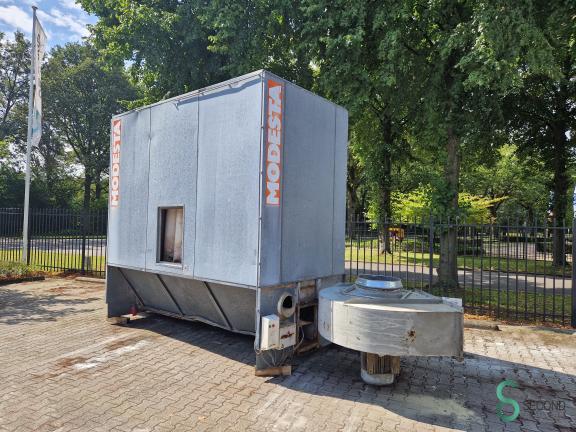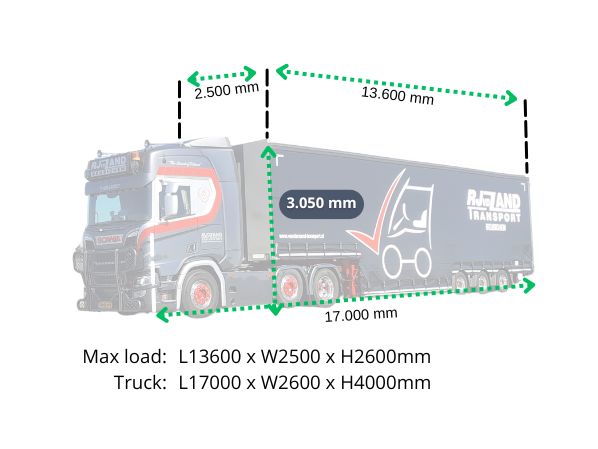Used extraction units
StocklistAre you looking for a second-hand extraction unit? Check out different types of extraction systems such as fixed installation or used mobile extraction systems below.
An extraction system, also known as a dust extraction system, is used to remove dust, fumes, vapours and other harmful substances released during industrial processes.
These systems ensure a safe and clean working environment by filtering the air and removing the harmful substances. Second Owner offers a wide range of used extraction units in various models and capacities, which are also available directly from stock. You can come and see and try them out at our premises in Wijchen! We can deliver the installations to you or you can collect them from us.
Buying a used extractor at Second Owner
An extraction system is used to remove dust, smoke, sawdust or fumes in the woodworking industry. These are mainly fixed (stationary) extraction systems. We have several systems available directly from stock, above you will find them by brand and year of manufacture.
Advantage of a used extraction system
A previously used extraction system also definitely has its advantages:
- Quality
- Direct delivery
- Trade-in possibilities
Quality
Second Owner thoroughly checks all extractors that come in. If necessary, repairs and modifications can be carried out. As a potential buyer, you are welcome to visit our location in Wijchen to test and inspect the installations for desired performance and capacities. So you always know exactly what you are buying!
Direct delivery
Second Owner sells machines from stock, which means we can deliver quickly. In many cases, we can put your extraction equipment on transport immediately. This can be crucial when extra capacity is needed quickly.
Trade-in possibility
Do you have a used extraction unit you want to sell? Or has your installation become obsolete and would you like to trade it in for another machine? Then leave your details via the page: sell machine.
Second Owner also buys in other industrial machines, such as metalworking machines, woodworking machines and material handling equipment, even if the purchase price exceeds. Discuss the possibilities with us!
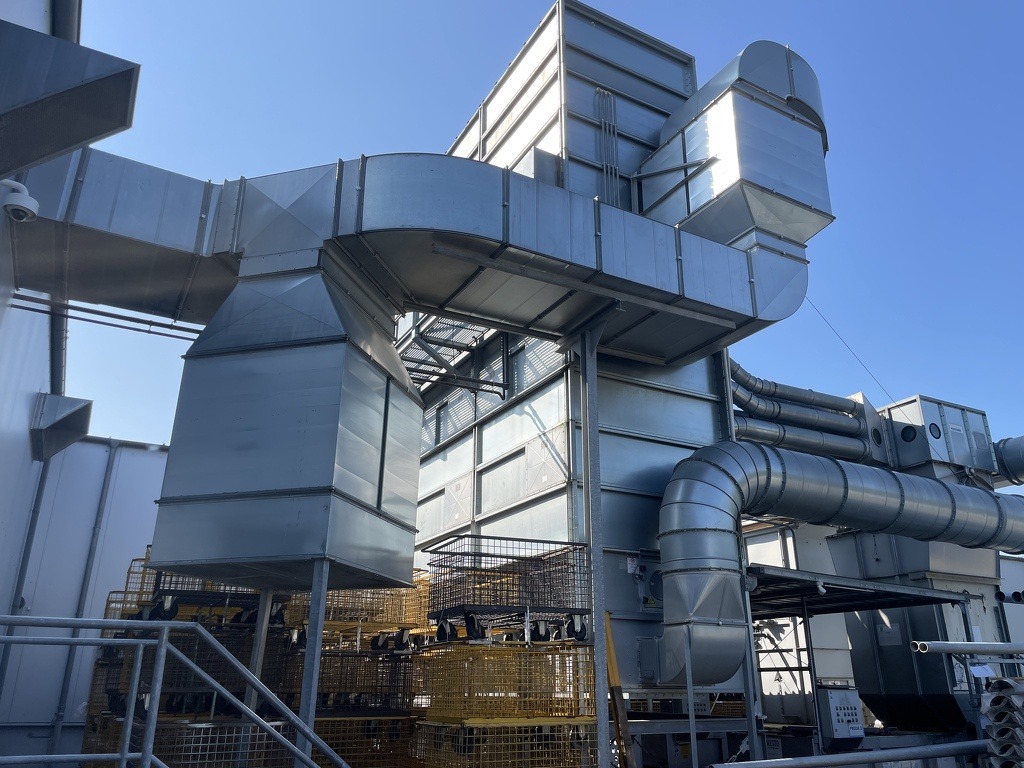
Brands and prices exhaust systems
Second Owner sells many used extractors from well-known brands such as Riedex, Holtrop & Jansma, Nederman, Modesta, Schuko, Höcker Polytechnik, and PCK. Other well-known brands on the market include Donaldson.
| Second-hand | From | To | Estimated retail price |
|---|---|---|---|
| Basic extraction system | € 500 | € 3,000 | ≈€6,000 |
| Large exhaust system | € 3,000 | € 25,000 | ≈€ 40.000 |
| Sophisticated extraction system | € 20,000 | € 80,000 | ≈€ 180.000 |
At Second Owner, you are assured of an extensive choice of reliable extraction equipment, with the ability to quickly switch and improve your working environment.
Would you like to buy a used extractor?
You can easily contact us via info@secondowner.com, via +31 655 855 207 or via the quote button on the extractor you require. We are happy to receive you by appointment to view one of our machines. This way, we can prepare the machine for you in advance. After your purchase, we can arrange transport for you, but you also have the option of picking up the machine yourself.
Would you like to sell a uses extractor to us?
Do you have a used extraction unit you want to sell us? Has your machine become obsolete or do you want to trade it in for another one? We will gladly buy your 2nd-hand machine and get in touch with you. If you would like to fill in the I want to sell form or contact us directly by phone +31 655 855 207
Lexicon extractors
What to look out for when buying a second-hand extraction unit?
Exhaust systems come in many different shapes and sizes, depending on the specific needs of your working environment. How do you choose the right extraction unit for your business? We explain the most important specifications for you so that you can quickly select a suitable system.
- Type of extraction unit
- Capacity
- Filter type
- Number of connections
- Dust collection
- Noise level
- Power
- Number of bags / bag surface
- Connection diameter
- Extinguishing system
- knocking system
- Dust collection
Kinds of extraction units we sell
Second Owner sells different types of used extractors:
- Mobile extraction unit
- Stationary extractors
Please use the filters on this page to quickly reach your selection.
Mobile extraction unit
Mobile extractors are useful for flexible use in different work areas
Stationary downdrafts
Stationary systems are usually more powerful and are permanently installed in one place for continuous use.
Capacity
The capacity of an extraction unit is expressed in cubic metres per hour (m³/h) and indicates how much air the unit can extract per hour. The higher the capacity, the more air can be filtered, which is essential for large workshops with a lot of dust.
Filter type
There are different types of filters available, including bag filters, cartridge filters and cyclone filters. Each type of filter is suitable for different types of dust and contaminants. Bag filters and cartridge filters are the most common in our range.
Number of connections
The number of connections on an extraction system determines how many machines or workstations you can directly connect. Exhaust systems can range from single connections to complex systems with dozens of connections. With a single connection, however, you can also connect several machines by branching the pipework. In this case, the pipes are reduced at each branch to efficiently distribute the airflow to all connected machines. This offers flexibility in designing your workspace and optimising dust collection.
Dust collection
The dust collection capacity determines how much dust and dirt the system can collect before it has to be emptied. This can be in collection bags, sump trays or blown through to a container, briquette press, or stove. Larger collection capacities are ideal for businesses that generate large amounts of dust.
Noise level
The noise level of an extraction unit is important for the working environment. Quieter installations are often desired in areas where noise reduction is important.
Most installations in our range have a noise level between 70 and 80 dB(A).
Power
The power of the motor in kilowatts (kW) determines the suction power of the extraction installation. Higher power is needed for heavier tasks and larger work areas.
Number of bags/area of the bags
The number of bags and the surface area of the bags are important for dust extraction efficiency. More bags or larger surface areas offer greater filtration capacity and longer operating time before needing to be emptied or cleaned. This can reduce maintenance costs and downtime.
Connection diameter
The connection diameter determines the size of the tubes or hoses that can be connected to the extractor. This should match the diameter of the pipes that transport the dust from the machines to the extractor. Most extraction systems have a connection diameter ranging from 100 mm to 500 mm.
Extinguishing system
An extinguishing system in an extraction system can be crucial in working environments where there is a fire risk from dust explosions. This system detects and extinguishes fires before they can spread.
Knocking system
The knock system helps clean filters by removing dust from filter bags or cartridges. Electric knock systems use a mechanical way to clean the bags, while pneumatic knock systems use compressed air to loosen the dust.
Underpressure and overpressure extractors
Exhaust systems can be classified into two main types based on their pressure regulation: negative pressure and positive pressure systems. The choice between these two types depends on the specific needs and conditions of your working environment. Here is a detailed explanation of the differences.
Underpressure extraction units
Operation
Pressurised extraction units create a lower pressure in the work area than the ambient pressure. This is done by drawing air and dust from the work area to the extractor, creating a vacuum or negative pressure. This lower pressure effectively directs air and contaminants to the extraction points, removing them from the workspace.
Motors
For negative pressure extraction systems, the motors are often located internally within the extraction system housing. This helps to make the system more compact and protects the motors from dust and other contaminants present in the workspace.
Applications
Dust extraction
Ideal for extracting dust and fine particles in operations such as grinding, sawing, and milling, where the creation of a vacuum helps to capture dust effectively.
Health and safety benefits
Vacuum systems are often better at maintaining clean air quality as they draw airflow to extraction points, reducing the spread of dust and contaminants.
Advantages
Improved dust control
Diminishes the chances of dust spreading in the work area, helping to maintain a cleaner and safer workplace.
Prevention of contamination:
Creating negative pressure prevents dust from escaping from the workspace, which is important in environments where dust can accumulate and be dangerous.
Disadvantages
Requires good maintenance
Can be maintenance-sensitive, especially if there are leaks in the system that can reduce the negative pressure.
Overpressure extraction systems
Operation
Overpressure extractors create a higher pressure in the workspace than the ambient pressure. This is done by blowing air into the room, which pushes air out through ventilated openings or extraction points. The positive pressure keeps dust and contaminants out, with air being pushed out of the room by the overpressure.
Motors
For overpressure extraction systems, the motors are often located externally, outside the work area. This often makes the system easier to maintain and prevents the motors from being exposed to dust and other contaminants that may be present in the workspace.
Applications
Air control
Suitable for applications where controlled airflow needs to limit the spread of dust or other contaminants, such as in cleanrooms or areas where products sensitive to contaminants are processed.
Protection of sensitive processes
Ideal for environments where the protection of sensitive processes or products from external contaminants is necessary.
Advantages
Protection from external contamination
By creating an overpressure, external contaminants are prevented from entering the room.
Ease of use
Can be easier to maintain in some environments as there is less risk of leaks due to positive pressure pushing air out.
Disadvantages
Diffusion
Less effective at capturing dust already in the room, as the airflows are aimed at pushing contaminants out rather than directly extracting them.
Summarised
Pressurised extractors are suitable for situations where dust needs to be effectively vacuumed and removed from the workspace, leading to a clean and safe working environment. They are particularly useful in industrial applications where dust and contaminants are generated. The internal placement of the motors helps protect them from dust and contaminants in the workspace. Overpressure extractors are ideal for environments where protection from external contaminants is important, such as in cleanrooms or sensitive production environments. They help keep the workspace clean by creating a controlled airflow to the outside, and the external placement of the motors makes maintenance easier and protects the motors from internal contaminants.
The choice between negative pressure and positive pressure depends on the specific conditions and nature of the processes in your workspace. It is important to evaluate which approach best suits your operational needs and safety requirements.
Explosion safety and ATEX standardisation
In workshops where explosive substances, such as fine dust, vapours or gases, are handled, it is crucial that the extraction equipment complies with ATEX standardisation. ATEX (ATmosphères EXplosibles) is a European directive that provides guidelines for equipment and workplaces exposed to explosive atmospheres. The ATEX standardisation goes beyond explosion safety and covers various aspects relevant to extraction systems:
ATEX standardisation and extraction systems
ATEX 2014/34/EU (ATEX Product Directive)
Purpose: This directive specifies requirements for the design and manufacturing processes of equipment and protective systems intended for use in explosive atmospheres. Application to extraction equipment: For extraction equipment, this means that all components, such as motors, filters and piping, must comply with strict safety requirements. This equipment must be designed so that it does not generate ignition sources that could lead to explosions. The plant must also have measures in place to minimise the risk of dust explosions, such as the use of explosion-proof motors and enclosures.
ATEX 99/92/EC (ATEX Workplace Directive)
Purpose: This directive focuses on the safety and health of workers working in areas where explosive atmospheres may occur. Application to extraction equipment: This involves analysing the workplace for the risk of explosive atmospheres and taking appropriate measures to ensure the safety of workers. For extraction systems, it means integrating them into an overall safety strategy that makes the workplace safe by minimising risks such as dust accumulation and ensuring effective extraction.
Characteristics of ATEX-certified extraction systems
Protection against ignition
ATEX-certified extraction systems are designed to contain no ignition sources that could ignite an explosive atmosphere. This includes the use of anti-static and spark-free materials, safe electrical connections and correct earthing.
Filter and collection systems
They are equipped with special filters and collection systems tested and certified for use in explosive environments. This helps to prevent dust particles from accumulating and creating a flammable atmosphere.
Construction and design
The construction of the extraction system is designed to withstand the consequences of a dust explosion, should it occur. This may include the use of explosion-proof enclosures and the integration of an extinguishing system.
Maintenance and inspection
ATEX standards require extraction systems to be regularly maintained and inspected to meet safety standards and to ensure effectiveness.
Our Exhaust Systems
Not all extraction units in our range are ATEX certified. If an extractor complies with ATEX standards, this is clearly indicated on the product. For workplaces with increased risks of explosive atmospheres, we recommend choosing an ATEX-certified extraction unit to comply with regulations and ensure a safe working environment.
Return lines
What are return lines
Return ducts are ducts in an extraction system that direct purified air back to the workspace after it has been filtered. This can help regulate the temperature and humidity in the workspace and can contribute to energy efficiency by reusing heated or cooled air.
Advantages
Temperature control
Return ducts can help maintain a constant temperature in the workspace, especially if the purified air has a certain temperature.
Energy efficiency
Reusing air can save energy for heating or cooling, contributing to a more efficient use of energy resources.
Disadvantages
Stuff reintroduction
If the filters are not effective, there may be a risk of residual dust being reintroduced back into the workspace, which can lead to increased dust residue levels and a less clean working environment.
Residual dust content
What is dust residual content
The dust residual content refers to the amount of dust remaining in the air after it has been filtered by the extraction system. It indicates how effective the filtration system is in removing dust and other particles from the air stream.
Importance
Air quality
Low dust residual content means that the air in the work area is clean and free of harmful particles, contributing to a healthier working environment and better protection of machinery and products.
Efficiency of the filtration system
The dust residual content helps evaluate the performance of the filters. Higher residual levels can indicate the need for filter upgrades or regular system maintenance.
Factors affecting dust residual content
Type of filter
Higher quality filters with better separation capacity will have lower dust residual content.
Maintenance
Regular filter maintenance and replacement will ensure that dust residual levels remain low and air quality is optimal.
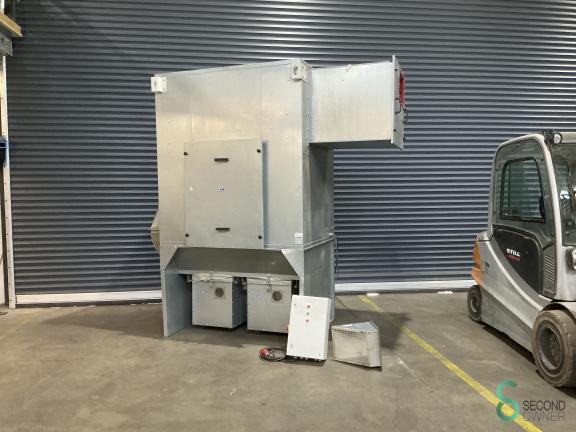
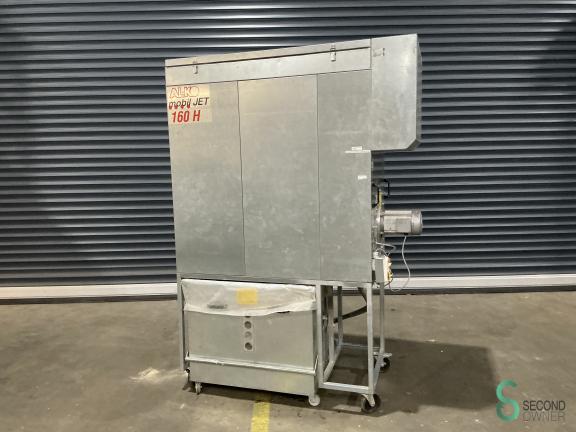
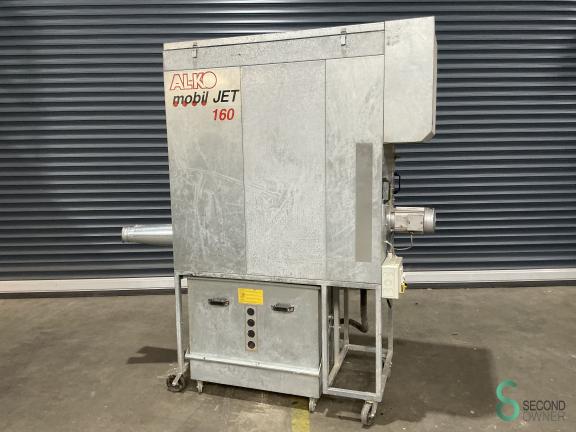
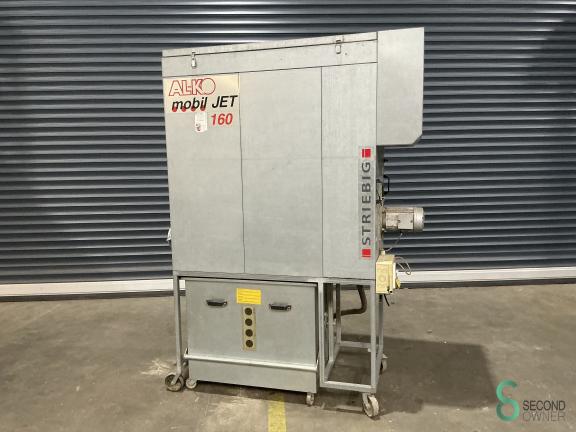
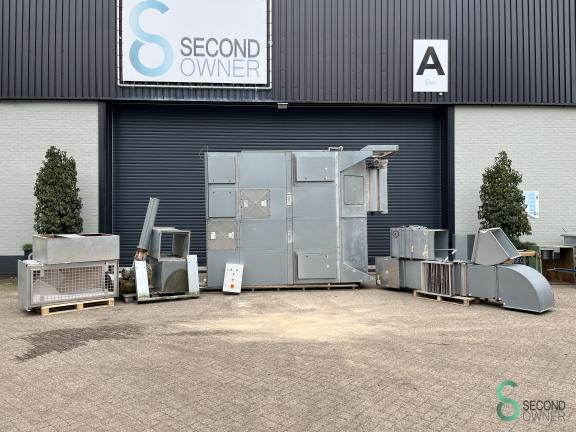
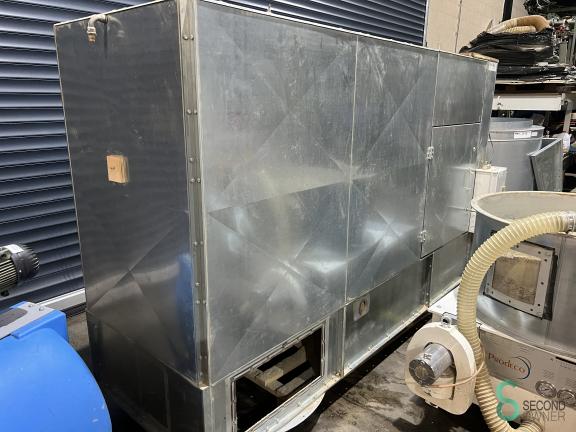
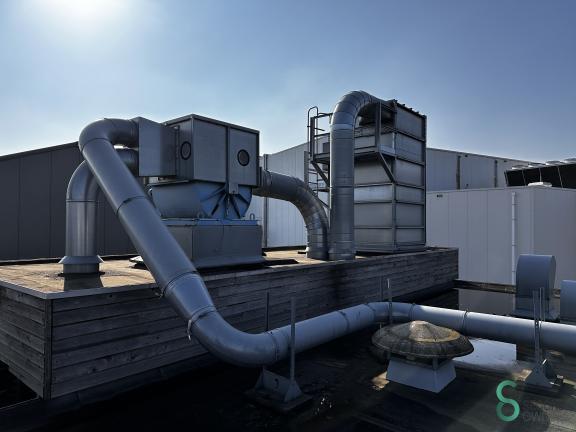
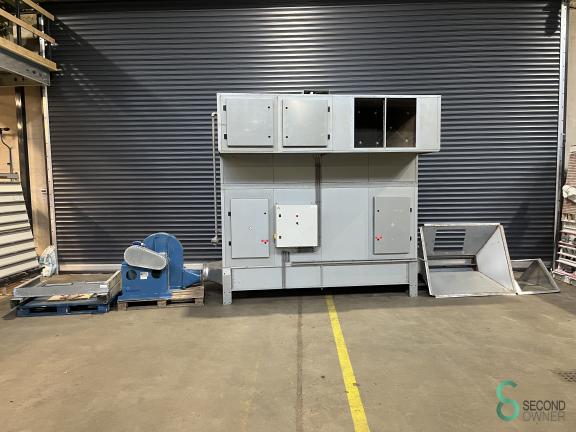
.jpg)
